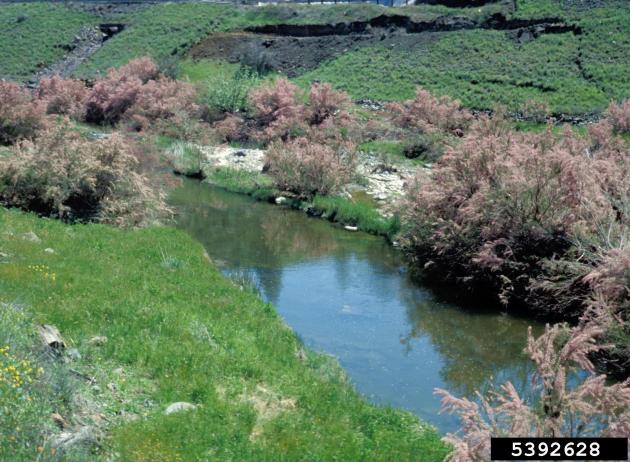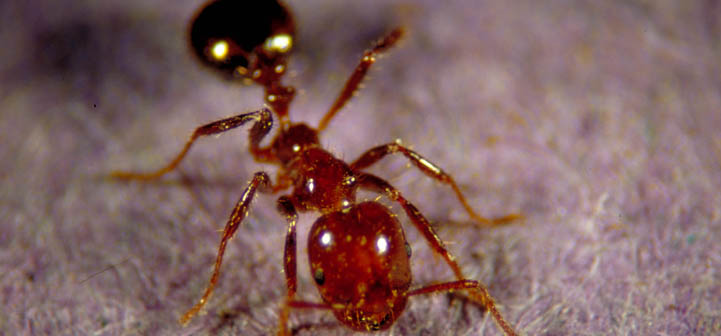Invasive species can cause harm in so many different ways that it isn’t practical to cover them all here. So, below is just a sample to give you an idea of how pervasive this problem is. Many of these changes are things you can see happening around you.
When a non-native species is introduced into a new environment it is freed from the natural predators, parasites, or competitors from its native habitat. This gives an advantage to non-native species competing with the native species that evolved in the ecosystem. These advantages allow the non-native species to outcompete native species for the available food, water, light, and space. Wherever an invasive plant is growing is where a native plant should be.
Invasive species also have the potential to disrupt vital ecosystem functions, such as water flow, nutrient cycling, fire systems, or soil composition. An example of this is the Tamarix species. It not only uses large amounts of water, it changes the soil chemistry, making it more saline. This can adversely affect and prevent the growth of many native plant species. Tamarix has significantly changed the hydrology, soil composition, and plant communities of many habitats in the western United States. An invasive plant may add significantly to the fuel load of an area, either in mass or because it contains volatile compounds. This can mean that fires burn hotter and faster than the native plants in that habitat have evolved for. After such a fire, the invasive plant quickly germinates or resprouts while the native plants are either killed or perhaps recover much more slowly.
 |
| Smallflower tamarisk – image by John M. Randall, The Nature Conservancy, bugwood.org |
Changes that damage native plant communities also affect the wildlife communities that depend on them for food and shelter. A wide range of effects have been seen in wildlife communities in these situations. Some animal species populations are reduced while others are increased. Someare even pushed to the point of extinction. Butthe overall trend seems to be a reduction in diversity. Even in cases where the same number of species are actually present, the balance between the species has been changed. We do not yet know what many of these changes herald for the future.
Invasive species can damage or contaminate crops from soybeans to pine plantations, greatly increasing costs to the agricultural industry and, in turn, to the American public for both food and other products. Industries such as the cattle industry can be affected when invasive plants that are basically inedible by cattle, infest ranges or contaminate forage. Other services such as electricity have cost increases resulting from the management and control of invasive species. A great deal of money is spent by power companies to keep invasive plants from growing in right of ways, up poles, onto buildings, and along power lines under control.
Natural areas used for recreation can be affected by invasive species. For example, Chinese privet and other invasive shrubs, trees, and vines can take over both clearings and the understories of forests making hunting, hiking, biking, and camping difficult or impossible.
 |
| Bighead Carp – image by Michigan Sea Grant Archive, University of Michigan and Michigan State University, bugwood.org |
Any body of water, river, or stream is especially vulnerable to invasive species. Water by its nature allows for much easier movement for invading organisms. The news has many examples of aquatic-invasive species that can and have spread very quickly causing significant changes in a very short period of time. From water hyacinth to lion fish or Asian carp, aquatic species are causing damage to these ecosystems and the organisms that inhabit them. It is often difficult, and sometimes impossible, to fish, boat, or swim on a lake covered by invasive plants. People have been hospitalized due to injuries received while boating on rivers infested by the Asian carp, which can easily leap over a boat.
